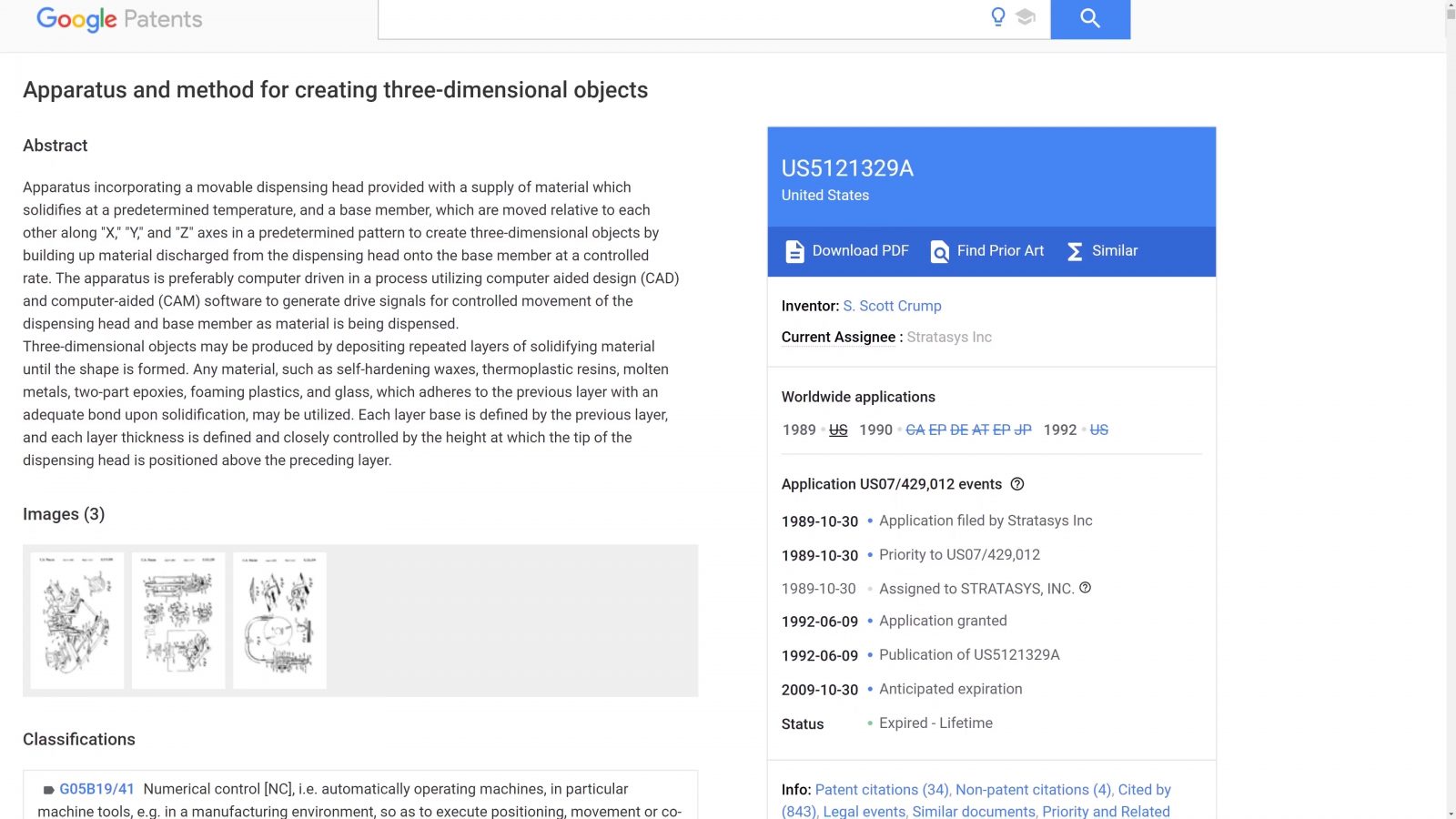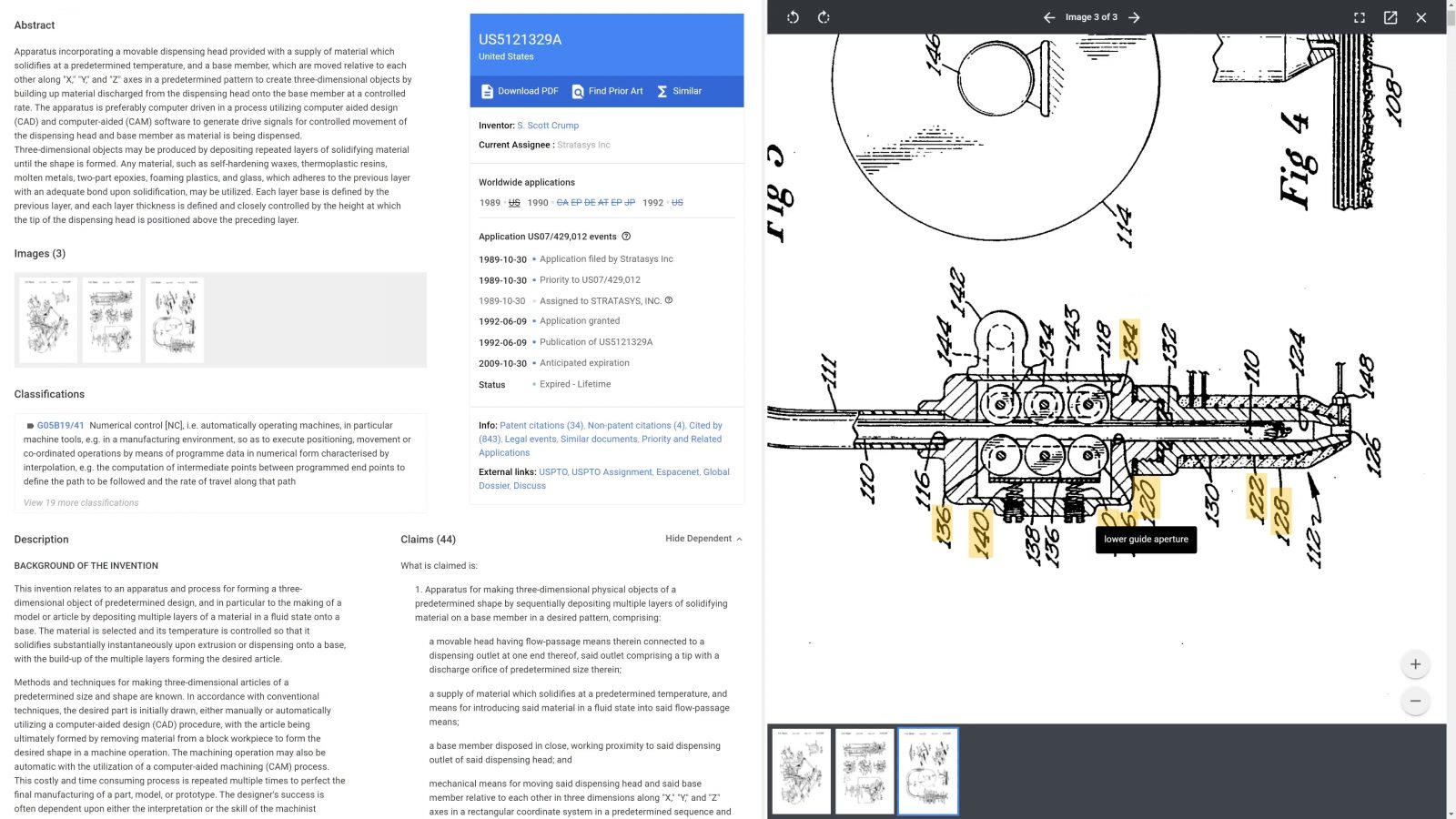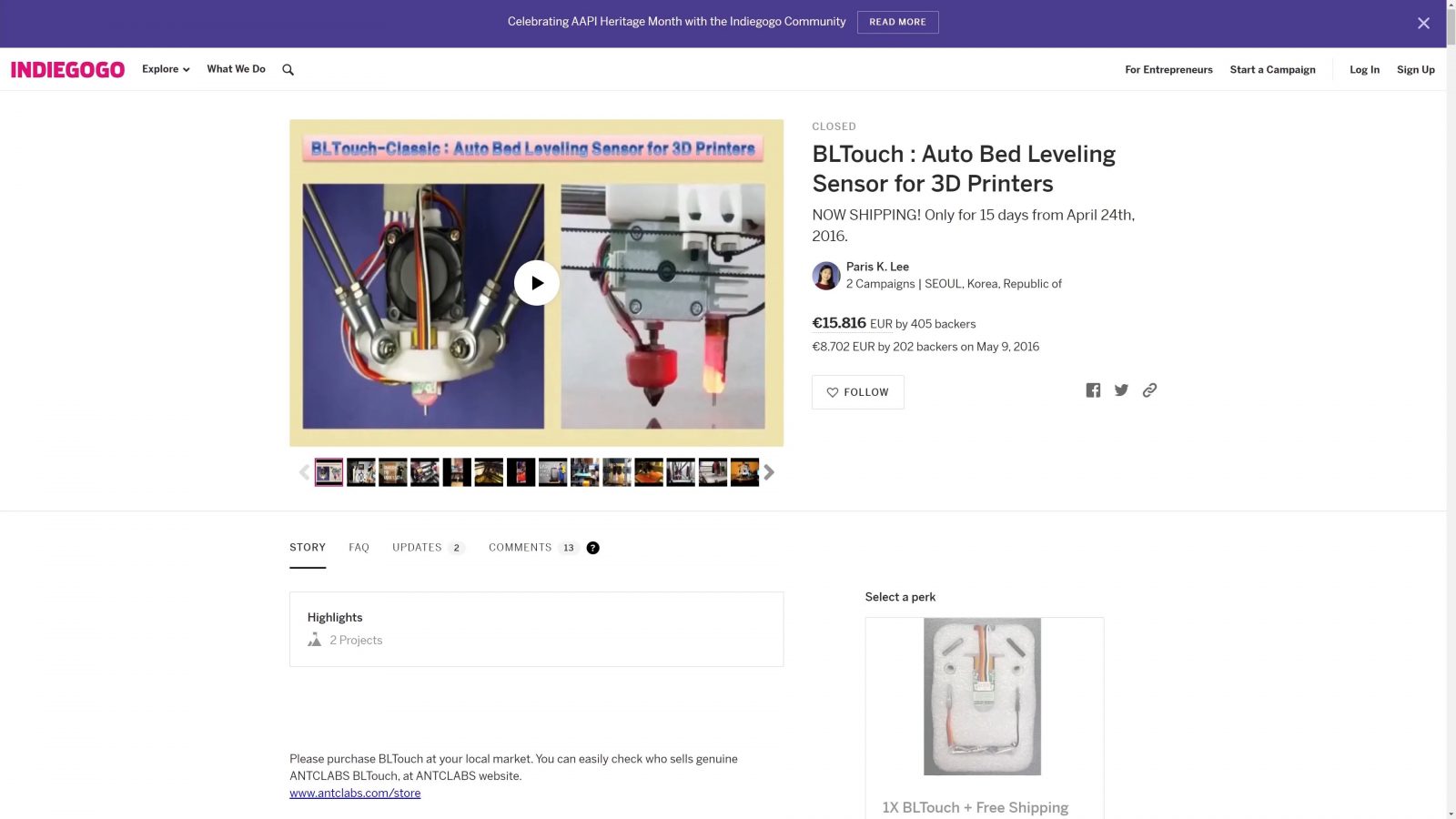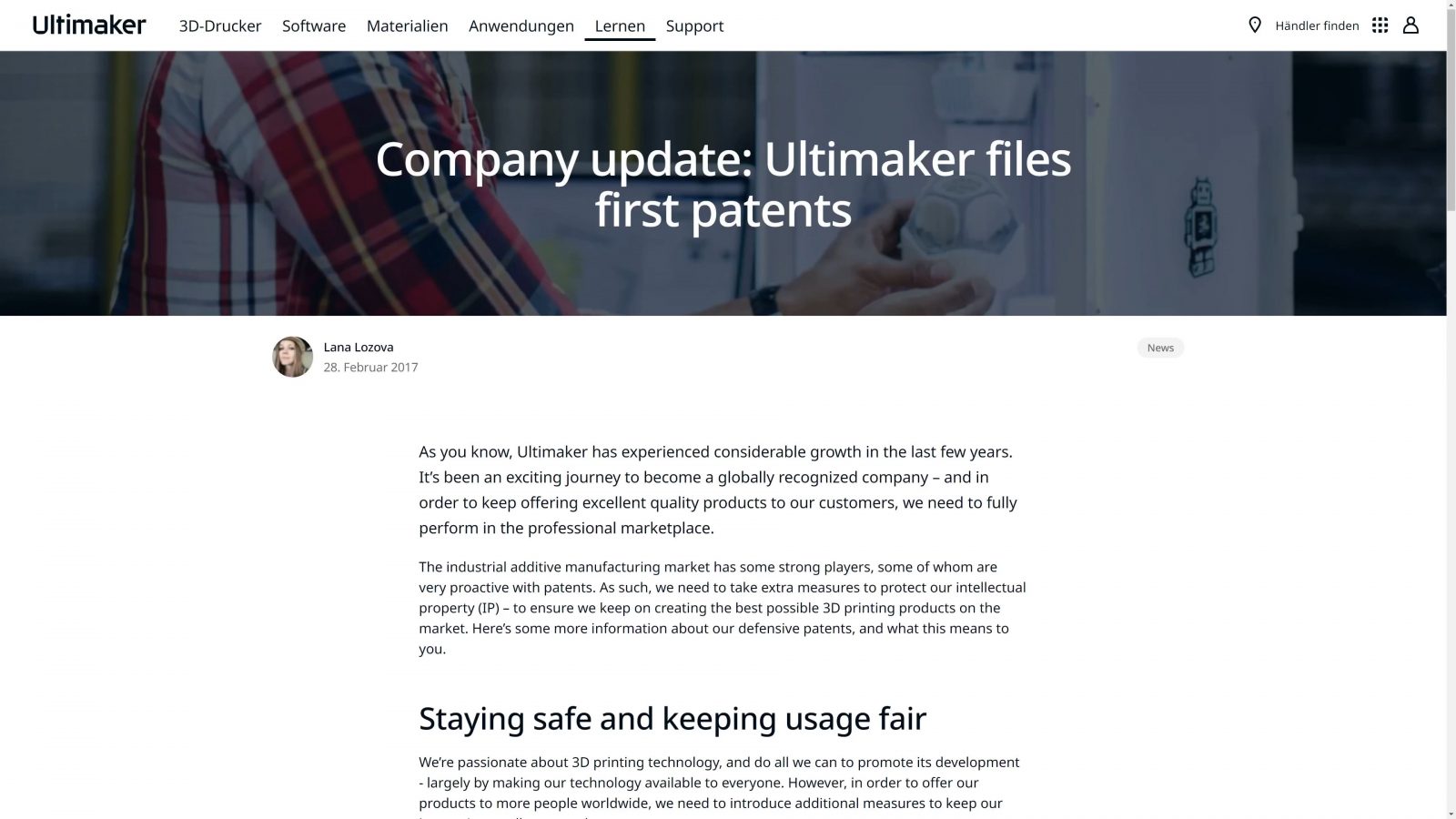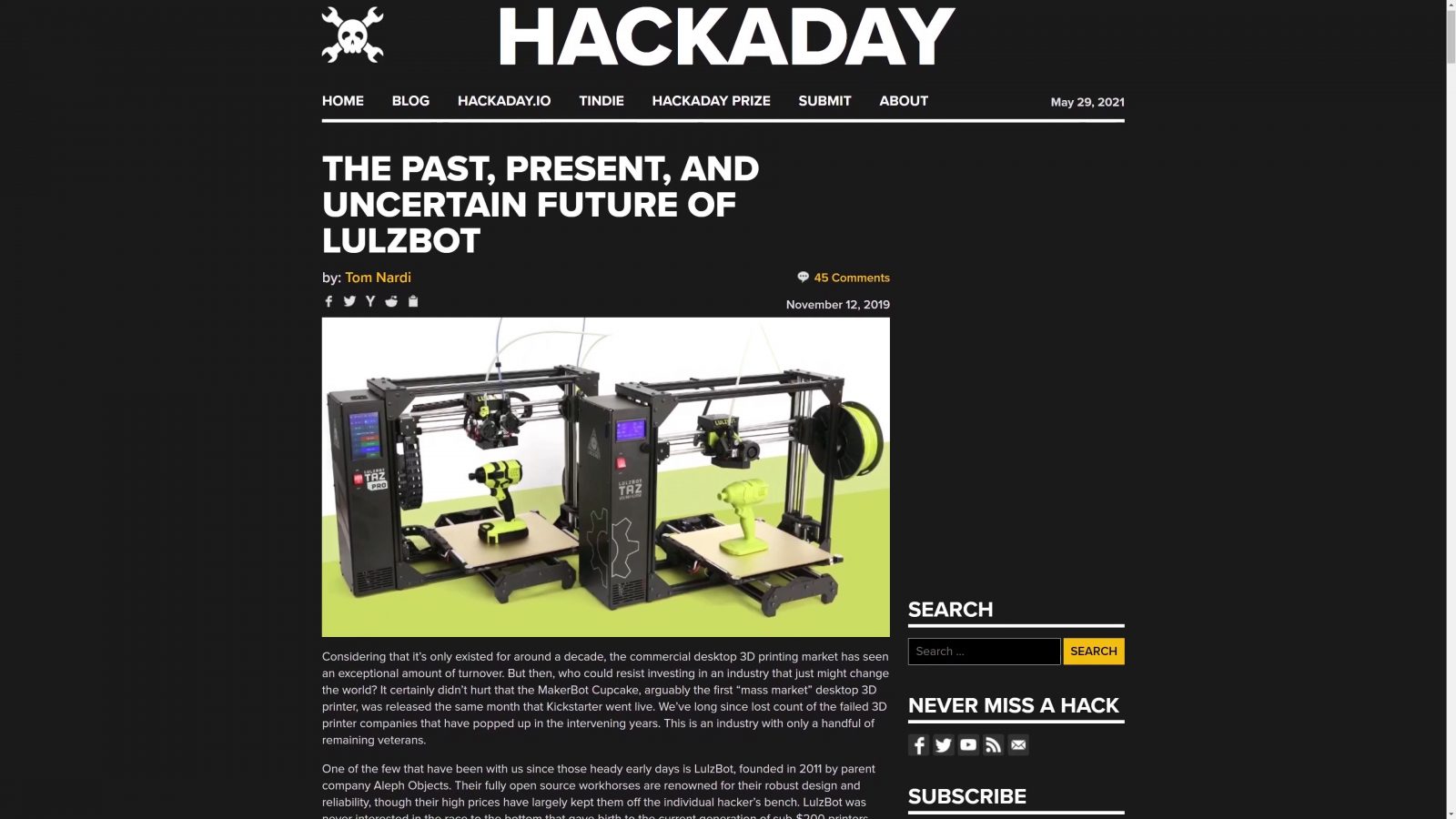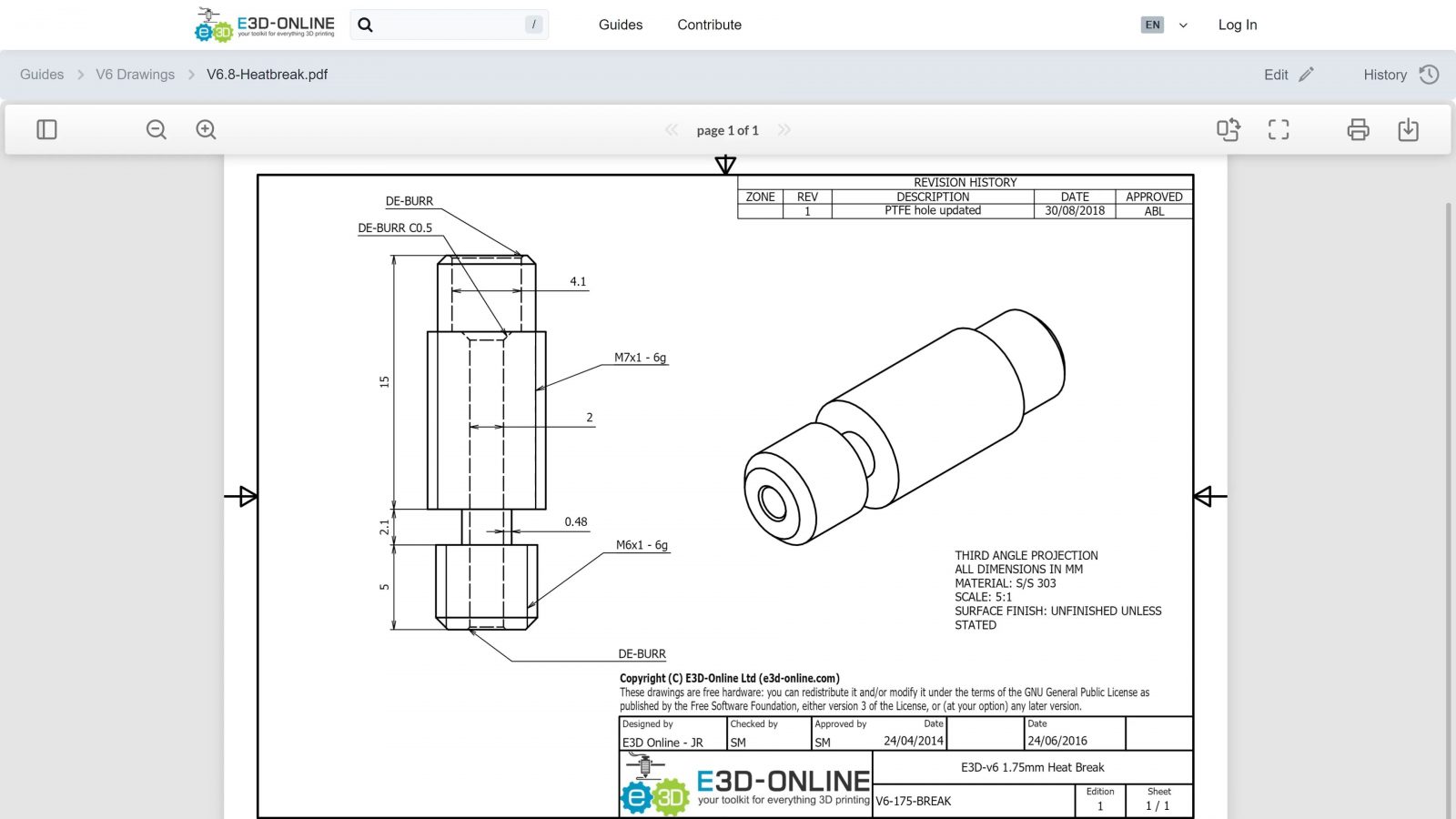Let’s talk about patents. You know, one of the things I’ve learned is that when there’s something that I’m conflicted about, the best and most civilized place to get input on that is the YouTube comments, so I do want to hear your opinions on this – but before you start typing out your take on what the current patent system does or doesn’t do well, hear me out. Because, you know, the situation of patents stopping specific products from existing is something that has been bothering me and a lot of people basically ever since hobbyist-grade 3D printing became accessible with the RepRap project. But as time moves on, I’m having a harder and harder time universally just condemning patents and the companies that use them.
So of course, the RepRap project only got started because the core patent on building parts from molten plastic using a three-axis CNC machine, that patent from Stratasys ran out.
Essentially, the tech was already there in the 90s, but nobody else was allowed to freely use it commercially because by holding that patent, Stratasys owned a federally-granted monopoly on using that FDM process.
Because that’s essentially what a utility patent is – when you come up with a novel idea, you can register that idea and be granted the exclusive right to exploit that approach for up to the next 20 years. So the theory is that that protects you from copycats that could take advantage of your development but wouldn’t have to invest in research and development. Of course, the consequence for anyone wanting to buy a product with that technology then is this: Since the patent holder owns the monopoly on using that idea, they are the only ones making a product with it and if they don’t execute on it well and don’t produce the best possible version of it, nobody else gets a chance on making a better one, either, so in the end, you would be stuck with choosing between buying a mediocre version from the patent owner or none at all. And it gets worse when “the best version” would actually need to combine patented ideas from several parties, that is something that’s almost never going to happen. And I think that is the biggest issue that I and most other people have with the patent system as it stands today.
Sure, a patent holder can license their patent out to competitors, but they don’t have to, and if they do, they can set up the terms however they want, so for example they could charge unreasonable license fees or demand that whoever they’re licensing to, sure gets to use that one technology, but in turn stops competing with them in another area. And unfortunately, that doesn’t seem to be an exception, but the norm.
There is one area where things work differently, and that is FRAND patents, that apply to areas where not having access to a patent-protected technology would make creating a product impossible that needs to work with a set standard.
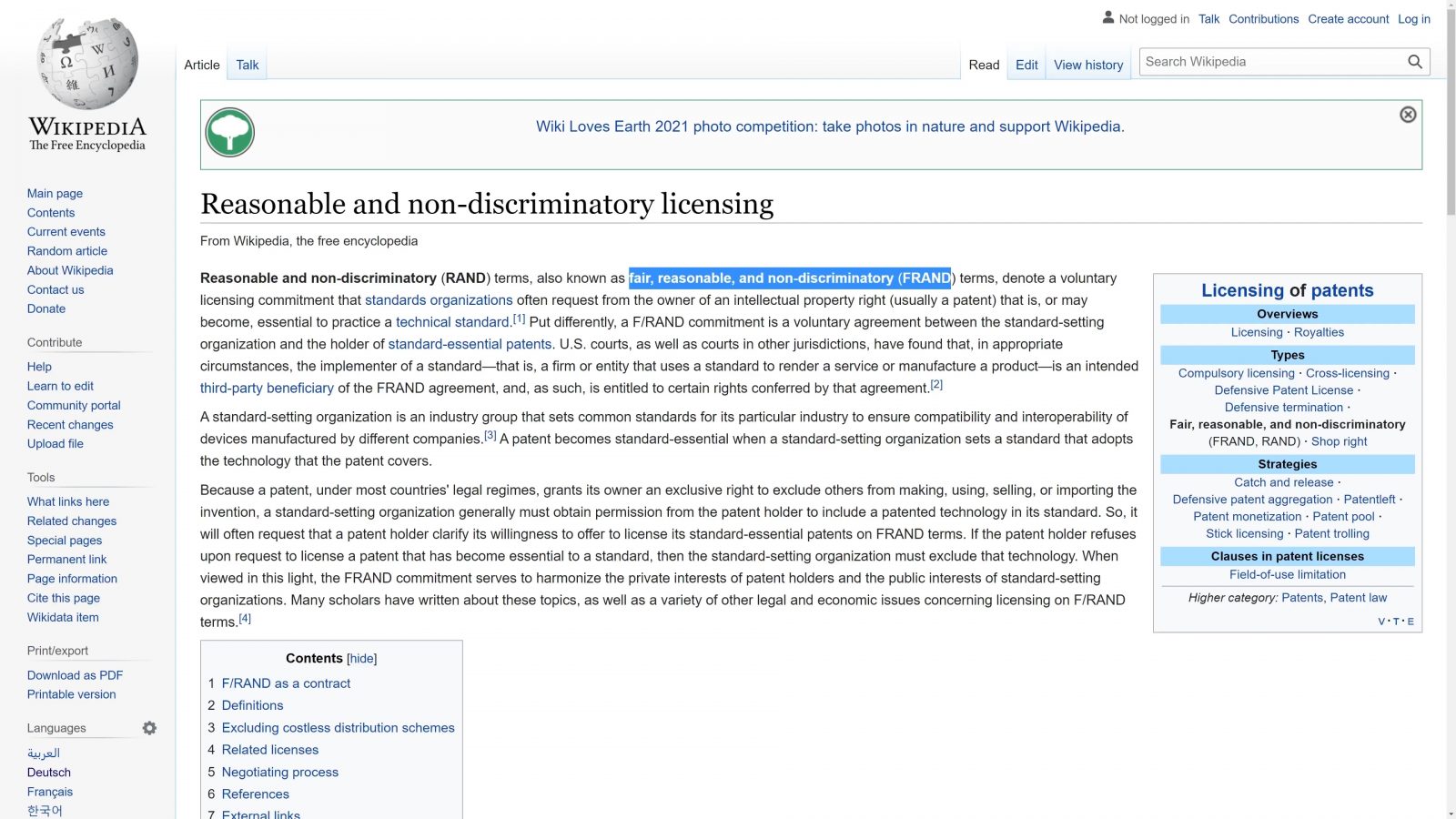
For example for patents that would completely prevent competitors from specifically implementing 5G modems. Because a modem for a mobile phone is such an essential component, and it is needed to use the 5G standard, the patent holders in those cases are required to license out those technologies under fair terms, at reasonable rates, and non-discriminatory to licensees. Of course, as usual, what is actually fair, reasonable, and non-discriminatory is up to the courts to decide.
In 3D printing, we didn’t use to see new products being protected by new patents, after all, most of the development was happening in the community by people who were just interested in the tech and wanted to see it progress.
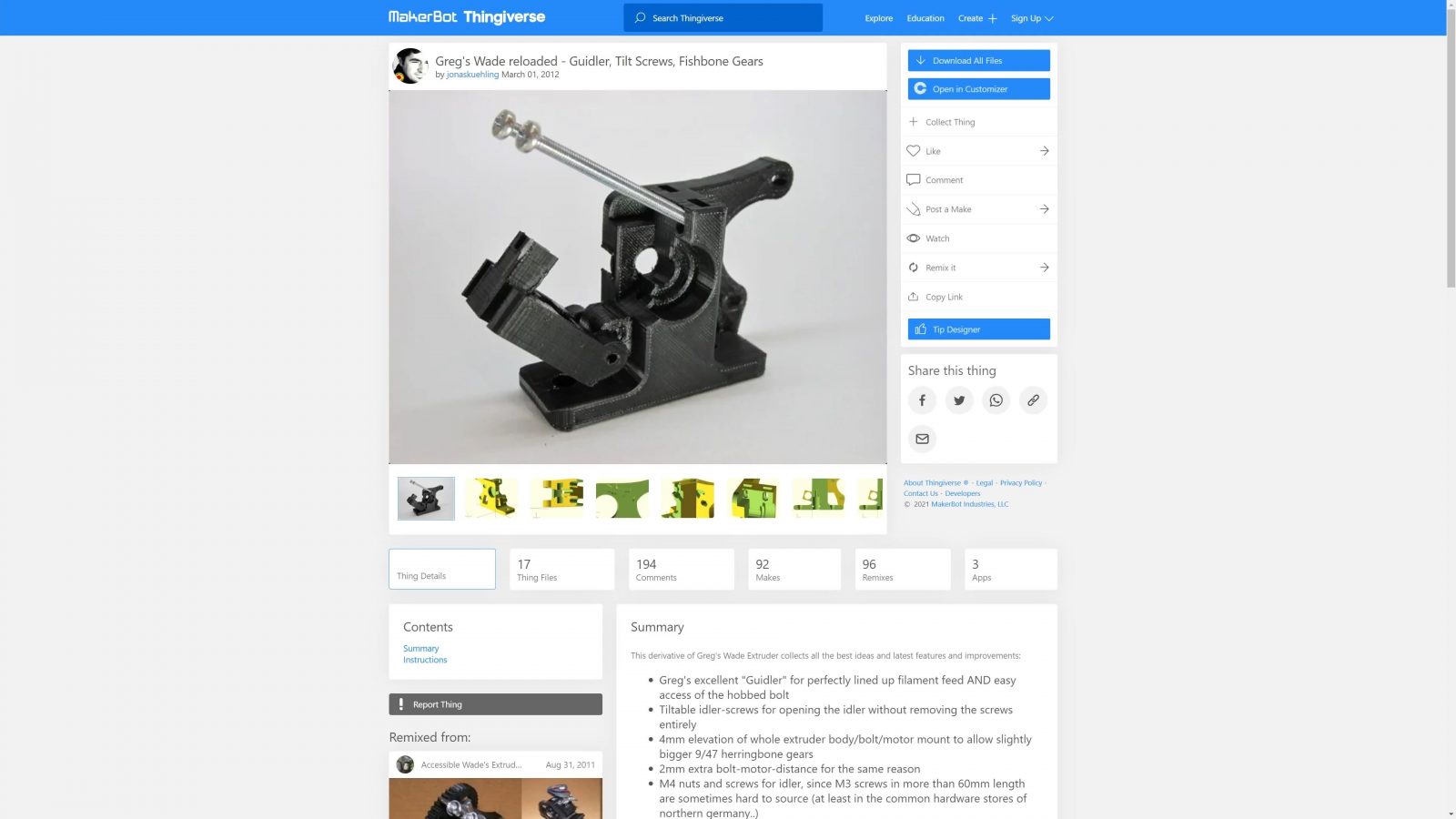
For example, the standard extruder of the time, the Greg’s Wade line of designs, that probably had a couple of hundred different iterations of it, and when somebody saw a way to improve it, they would grab the design, modify it, and upload it again for everyone else to use. At one point, I contributed a change that improved how the filament was guided in, that was adapted and changed to be easier to use and, in the form of the Guidler, it became the standard for how that style of the extruder is or was being built – and I think that is a wonderful way to develop something new. But it only works when everyone involved is willing to donate their time and work for free, and that really only takes you so far. Many of the sophisticated free, non-patented, and open-source projects that drive lots of the 3D printing world, like Cura, PrusaSlicer, the Marlin, Klipper, or RepRap firmware and for example, mainboard designs now all have either a company behind them that sells a physical product or have Patreons or other funding sources. By the way, thank you to all the Patrons that make it possible for me as well to produce content that I can give away for free.
So because even when it’s free and quote “just software”, it’s never free to produce. Blender, for example, is a most excellent piece of software but, as of June 2021, also has 136.000€ of funding available – every single month.
And while be it with or without the goal of making money off it eventually, it is the norm that you’re able to start a software project with no budget or investment at all other than the computer that you already have, it’s not so easy when it comes to physical hardware. Sure, you could build and manufacture the parts for an early RepRap or RepStrap with a basic set of tools, but once you’re trying to make something that’s just a little bit more advanced, suddenly there are costs for making or ordering prototypes, buying equipment and machinery for that, and if you’re planning on making that physical product available to people, you can’t just upload it to GitHub, suddenly you’re renting and outfitting a physical space for development, manufacturing, packaging, and shipping and since you’re now a vendor and manufacturer, you’ve got costs for possibly getting certifications on your product and legal support, but you’re also going to need someone for customer support, RMAs, logistics. What I’m saying is that when you’re distributing a physical product to people, there’s just always a significant upfront investment you’re going to have to shoulder before you’ve made your first penny on sales. That’s why things like Kickstarters or venture capital exist. It’s a way of funding that second stage of development, and then the initial distribution.
So sensibly, what it comes down to is trying to get a return on that initial investment. You know, one of the things that stuck with me from my time in the automotive industry is, I think it was in a quarterly report meeting or something, is when the CEO said “our goal is to create value for shareholders”, and that stuck with me. A company or a business you run, is, by definition, a construct with the sole and primary purpose of generating profit. It’s not about building the best possible product, it’s not about making the customer happy and it’s definitely not about being an awesome employer, its exclusive purpose is to turn a profit for whoever holds a share in it – be it the founders and entrepreneurs or VC or stock owners, they want to see a return on their investment. If you actually have to make a good product in the process, well, that’s just one of many means to an end. But I mean, wanting first and foremost, and ROI is a pretty universal truth whenever anyone invests in anything.
And one of the ways to make that ROI more likely, in a lot of cases, is by protecting that initial investment and the continued exploitation of your unique new concept with a patent. There have been plenty of cases where a patent, used as intended, would have done exactly that: You guys remember “Hoverboards”? Well, they were initially called “Hovertrax”, but the original product got pushed out of the market it itself had created by cheaper clones, and on top of that, those clones would regularly catch on fire, ruining the reputation of the entire category in the process.
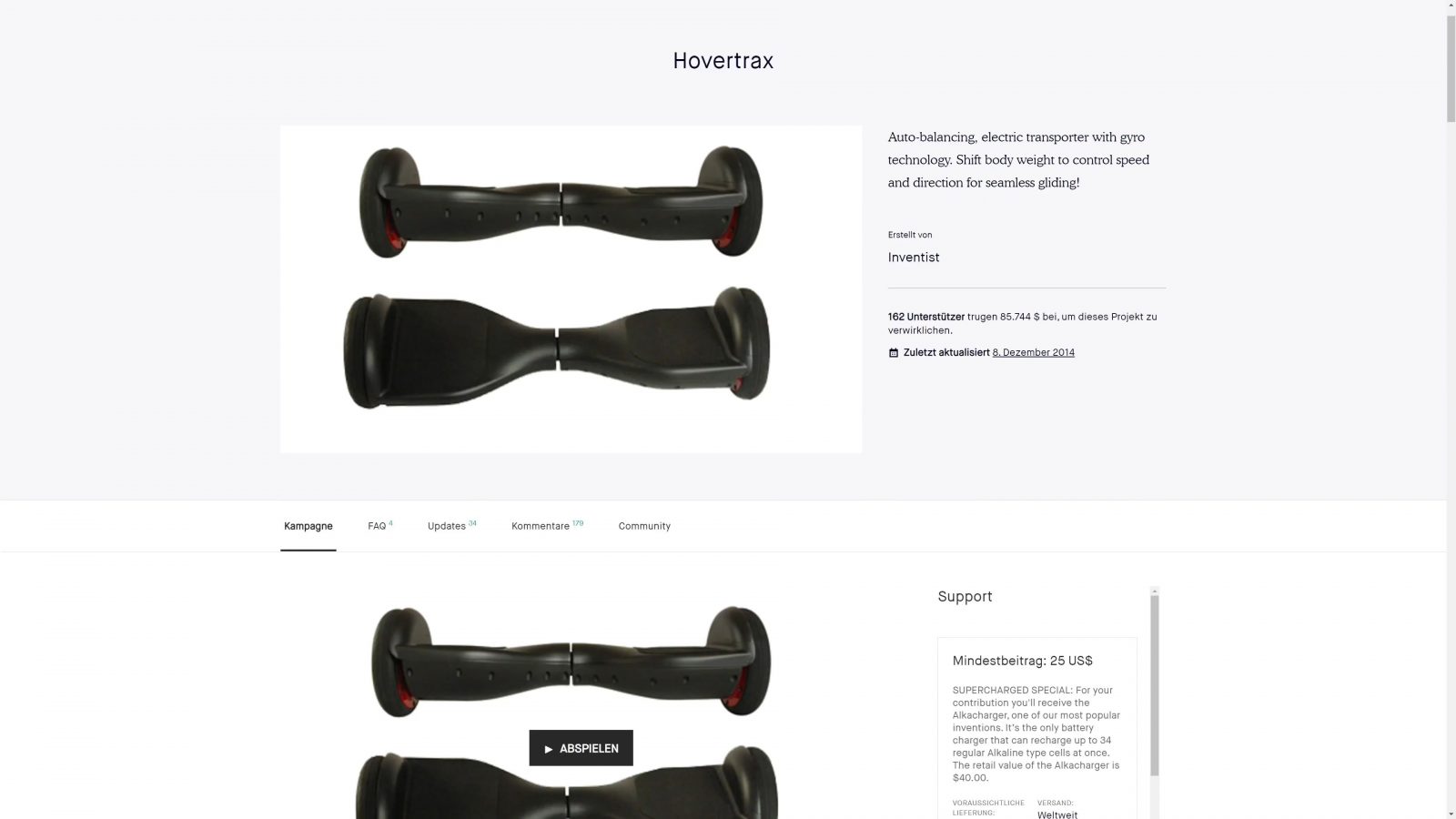
The E3D Titan extruder. There were clones, or I guess more accurately, knockoffs available before the original one had even really started shipping out to buyers.
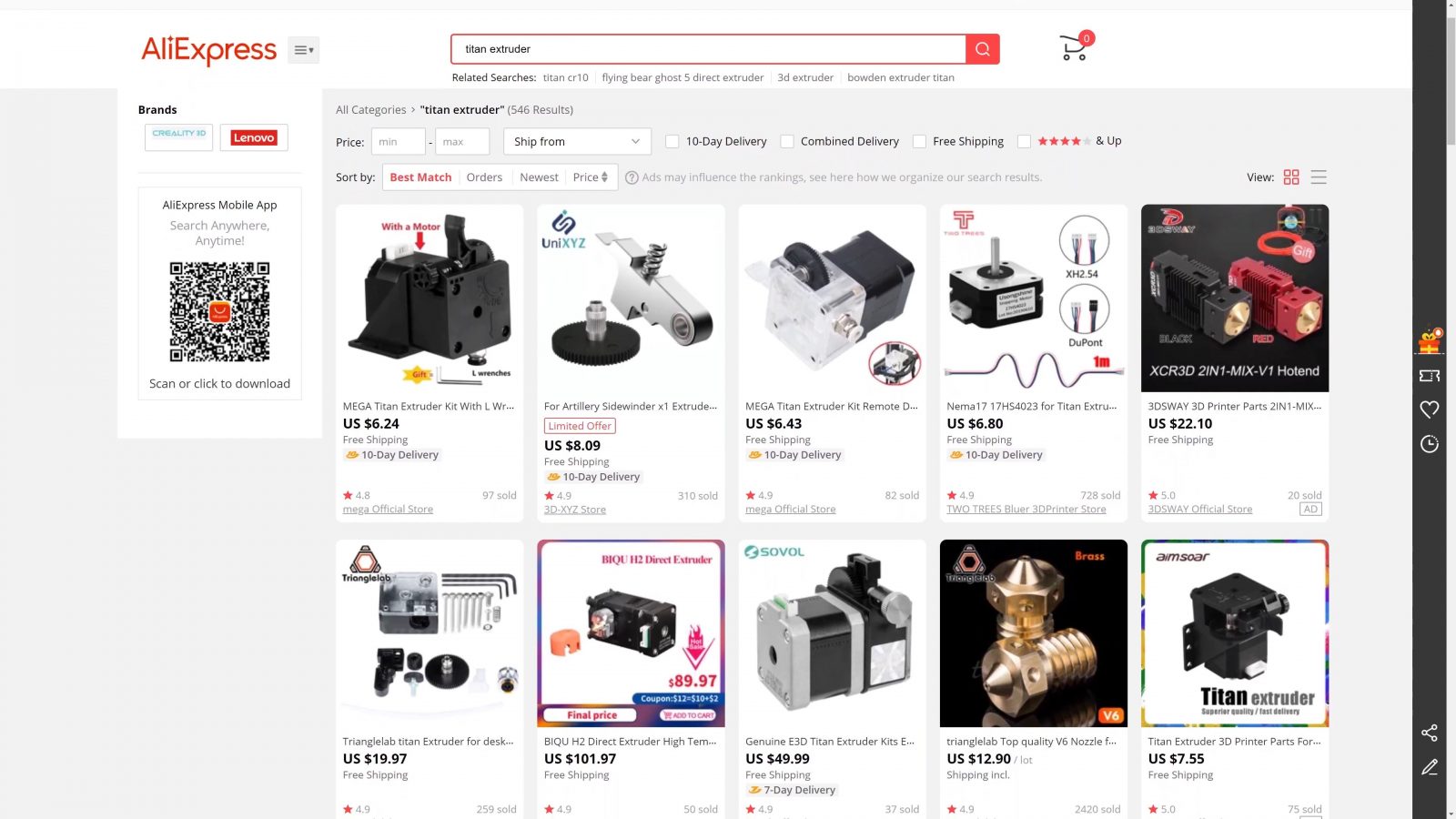
And even before that, E3D had gained a bad reputation because cheap knockoffs of the v6 hotend would regularly jam when printing PLA. In all my years, I’ve not once had a genuine E3D hotend jam on PLA, unless the cooling fan was being blocked, but somehow the stigma stuck with them that the v6 just wasn’t suitable for PLA.
So I’ve been giving companies shit for patenting, anything, really, because the past experience with patents in 3D printing has basically delayed the tech by 20 years and it’s looking like new patents are about to do that again with more advanced applications.
But with startups being taken advantage of by companies with a larger legal department and more manufacturing prowess, again, I’m having a harder and harder time demonizing patents altogether. And historically, I think most of you don’t care about whether a product is open-source, or patented, either, from what I can see, all that most people care about is being able to buy a decent product, and possibly the cheapest version of that.
Let me run through a couple examples for that:
The BLTouch. Probably the first product in the DIY 3D printing space that’s been totally protected by IP rights and, yes, patents. When this thing originally launched in 2016, the patents on it were already filed, but it’s a bed leveling sensor that seems to be universally loved.
Ultimaker started filing a couple patents in 2017 and they had to explain themselves, but at time they had already (probably intentionally) priced themselves out of the DIY market that would take offence to a company filing patents, so they played that pretty smart.
Lulzbot Aleph Objects, one of the most anti-protection, share-everything companies, they went bankrupt and their Lulzbot Brand was bought up by Fargo Additive Manufacturing Equipment 3D. I’m not sure if the super-open-source philosophy was the cause of that, though.
Again, E3D, they’ve toned down which designs they publish, and how detailed they go. If you’ve ever tried to model up a v6 hotend, you’ll notice that the drawings simply lack some dimensions that would make them fully constrained, but also there are no tolerances or surface finish requirements noted, which would be important to produce, for example, a functioning heat break. So while the drawings are ok for making a visual CAD model, they aren’t the real “source”, the production files for the physical product.
On the other hand, when companies release full source files for designs that are already the status quo, or just don’t patent them (which shouldn’t be possible anyways for status-quo stuff anyway) I don’t think that’s particularly useful, either. We’re approaching year four on the “every printer is another Ender-3” timeline and that, too, is stifling innovation.
Because what I originally liked to point out that not patenting things would lead to competition on “who can build the best version of this concept”, well it turns out, I was wrong there. It’s not about who can engineer the best product, it’s about who can execute on manufacturing it the quickest and the cheapest, and that, almost universally, is not the same group of companies that are also going to make it a good product. The one exception that comes to mind is Prusa, who, as far as I’m aware, are not patenting things because really, they have no need to, but that’s partial because they are already well established, and also, they live in the wonderland that is eastern Europe eastern central Europe and the Czech Republic, where you have both capable engineers and cheap labor. Still, they are also moving towards having their own ecosystem of open-source, but proprietary parts that are all integral to, for example, building a Mini or a MK3S and having it perform as intended. So even though the largest parts of the design are open-source, it still makes it harder to replicate it, and then if all you did was to manufacture it cheaper, you would still be competing with a company whose costs are already low.
Okay, so where does this leave us with patents. I can’t reasonably keep blaming companies for registering them and using them as intended. After all, that’s how the system works and is intended to be used – what they’re doing might not be the way things used to be done, but it isn’t illegal, in fact, it is actively encouraged, if not required by the legal system. It’s a “don’t hate the player, hate the game” kinda situation.
So I’m going to hate on the game because the current patent system is broken. It’s a remnant from, I don’t know, the 17th century? 20 years of exclusivity probably felt appropriate back then, but actually, in 1450 when the first patents were issued in Venezia it was just ten years, but, anyway, today the 20-year protection duration is the difference between “oh I’m sorry, loading up this email on my dialup connection is taking a bit long” to “oh, of course, my pocket supercomputer has a mobile gigabit connection” – in the worst case, patents can elongate an innovation cycle, where one thing is invented, and the next thing can then build on that, to 20 years, which is insane in a time where information can be shared with anyone on this planet in less than a second and in mere minutes with anyone in the entire solar system. We’re just not sending around hand-written articles anymore that are then going to get published in magazines that take months to print and distribute as we did in the 1600s.
So while I don’t think I’m the best person to give advice on these things, what sounds obvious to me is two suggestions that I’d have: First, shorten the protection span. Do five years. That’s still a long time, but honestly, if you’ve not made your money back in those five years, either, you never will, or you’re strategically holding back innovation just so you have a new, marginally improved product to sell every year. Sound familiar?
Also, make licensing mandatory, so extend that “FRAND” approach to everything. Somebody who wants to build a product should be able to do so, but pay the patent holders involved a reasonable price to use their IP under fair conditions. That way, the patent holder gets their fair share and the consumer gets to choose the best product.
And that’s actually something that I would encourage the companies that hold patents in 3D printing today to start doing anyway. Offer reasonable licensing options to companies that want to build something based on your patents, and if you want to be really cool about it, make it public how much those licenses would cost per every item sold.
So why am I making this video? This has been a conundrum that’s been bugging me and I’ve been wanting to put into words for a while. But next week, I’m going to be live building a Voron 2.4, and that entire build is going to be sponsored by Slice Engineering and I’ll be using their Mosquito Magnum+ hotend. Which is patented and has caused some stir when, as a patent is intended to be used, it was the reason for the Trianglelabs Dragon hotend to be taken off of Amazon and Aliexpress. Some folks prefer the Dragon to the Mosquito, not because it’s cheaper, as I understand it, but because it’s easier to use in their specific application. And that’s one of the things I’ve already outlined because Slice Engineering themselves don’t make a Dragon-style hotend and licensing the design apparently wasn’t an option, it feels like the Dragon-style Mosquito is now being taken away entirely. Even though, technically, it shouldn’t have existed in the first place.
I absolutely see the disappointment in how that went down, I would have personally preferred everything being available in as many versions and from as many sources as possible, but I also see the need for ventures, for companies to protect the work they’re putting into creating new things, so I can’t really take sides here, this is not a great situation, but I think it’s because of a system that needs to be fixed.
Was I too harsh in the past on companies like WhamBam for going on about how they’re starting to patent things? I’m not sure about anything anymore.
This video is not going to a satisfying end, but maybe we can reach some consensus in the comments? Maybe?
In any case, tune in to the live stream next week, and if you’re there in chat and the topic of patents comes up, I’m probably not going to respond to it on stream because it’s way too deep of a topic for me to properly discuss in the heat of a live stream, but I would appreciate it if you could point people to this video. Posting links is disabled, unfortunately, because of spam, but I’m sure there are other ways to send folks here.
So again, please leave your input in the YouTube comments, if this video helped shed some light on the patent situation, give it a like, and get subscribed for more videos and for notifications when the Voron 2.4 build starts next week. Until then, keep on making, and I’ll see you in the next one. Bye!
💙 Enjoying the videos? Support my work on Patreon!
Product links are affiliate links – I may earn a commission on qualifying purchases (at no extra cost to you)

Check out my second channel “More Layers” on YouTube for livestreams
I use Epidemic Sound, sign up for a 30-day free trial here

